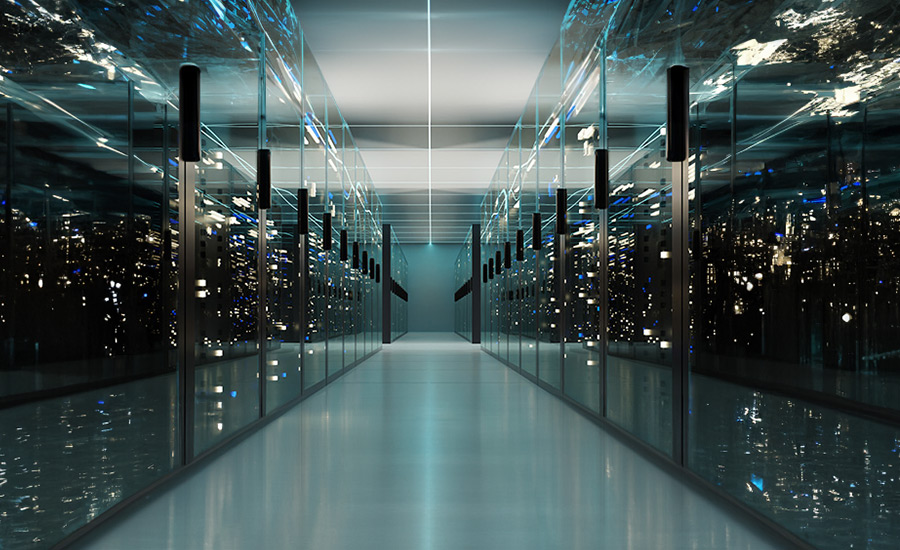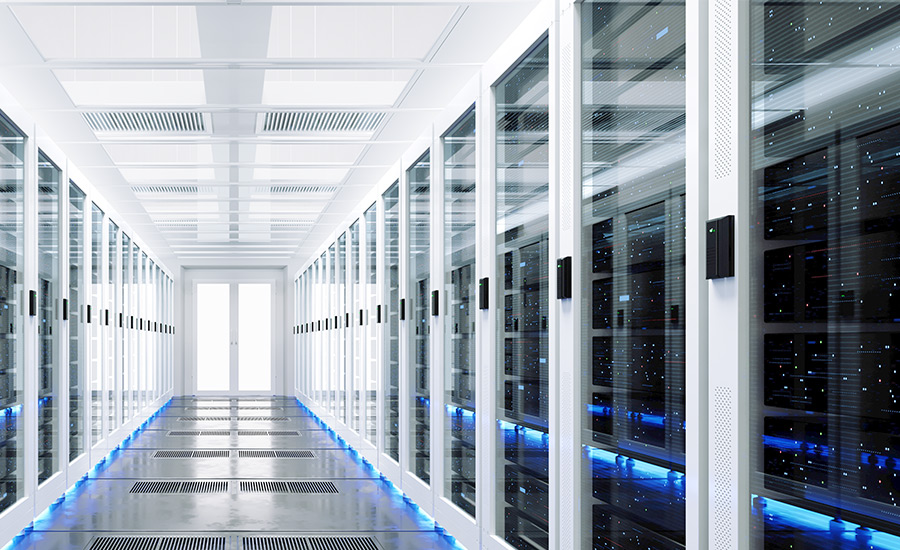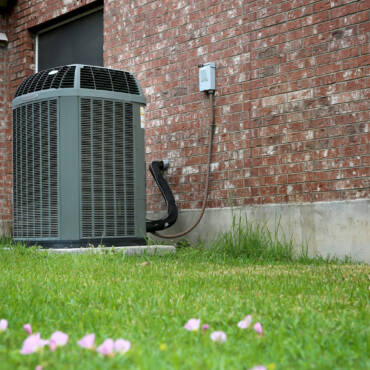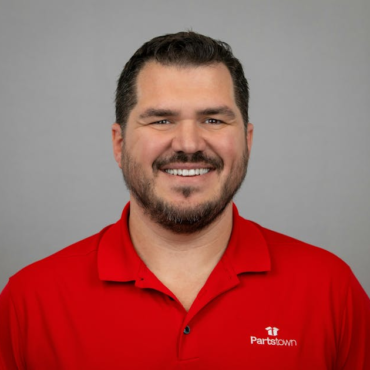✕
Over the last ten years, the data center industry has seen huge growth, powered by exponential growth in demand for cloud-based services and the increasing use of web-enabled devices. This huge growth is likely to continue in the future, thanks to data-hungry technologies such as artificial intelligence and virtual reality. It has been estimated that consumers and businesses will generate twice as much data in the next five years as all the data created over the past decade.
Data centers require large amounts of energy: they currently consume up to 1.5% of global electricity, projected to be as much as 9% by 2030. Much of this is used to power servers, but these in turn produce heat and need to be cooled. A significant amount of energy is also required for this: according to one estimate, around 40% of the energy needed in data centers with traditional air-based cooling technologies is used just to cool the electronic components. This thirst for energy is only likely to increase as data centers move to higher rack densities, ramping up the amount of computing equipment installed and operated within a given space.
The Importance of Reliability
Fault-free, continuous cooling is essential for every data center
Even a brief period of downtime can have major financial consequences for data centers’ corporate end users: according to one estimate, an outage costs businesses USD $300,000 per hour on average, rising to as much as USD $5 million per hour. One of the most significant factors in maintaining reliability is a data center’s cooling system: high temperatures can damage IT cooling equipment, causing it to fail. Efficient thermal management, on the other hand, ensures that electronic components operate within their optimal temperature ranges.
– Alex Schafer
Business Development Manager,
Güntner
Güntner’s products have reliability built in. Our heat exchange solutions are trusted in a wide variety of critical scenarios across different industries worldwide, from keeping food fresh to enabling vital energy supplies. We use high-quality materials and components as well as resilient, powder-coated casings, to ensure a long lifetime. At our state-of-the-art laboratories in Fürstenfeldbruck, Germany, and Caxias do Sul, Brazil, we carry out stringent testing of all of our products to ensure their resilience. This includes high-level analysis of parts to ensure resistance to corrosion, including salt spray testing and digital microscopy.
Our Fürstenfeldbruck laboratory also carries out testing to validate the capacity and performance of units to a high degree of accuracy –precise measurement of a wide number of variables allows us to deduce exactly how units will operate in different conditions. We also carry out sound testing of units.
“We have deep engineering knowledge,” says Marco Baumann, Managing Director, JAEGGI Hybridtechnologie AG, a Güntner Group company. “This means that during the design phase of a new data center, we are able to provide every single data point that our customers may need if they’re running a simulation, so they can optimize their cooling system.”
“Data center clients take a comprehensive look at the performance and design of equipment,” adds Alex Schafer, Business Development Manager at Güntner in the US. “We meticulously analyze thermodynamics and acoustics to guarantee performance in these mission critical applications, and this is only possible because of our extensive experience and expertise.”

(Photo © iStock: mesh cube)
A Solution for Every Requirement
Güntner products are currently in use in it facilities of every size
We can provide a solution for all requirements, from small, on-premise computer rooms to giant hyperscale data centers containing many thousands of servers.
Case Study: Meeting a Tech Company’s Concerns
Güntner is currently working on a project with a leading technology company that will see construction of a large number of new hyperscale data centers in the US. Each will utilize up to 70 double-stacked Güntner High Density Dry Coolers that are designed to avoid water waste and chemical treatment of the cooling system.
“The customer’s primary concerns were energy efficiency and water efficiency, and sound was also a major factor,” says Schafer. In the latter case, new fan solutions were utilized to meet the customer’s requirements. Güntner’s ability to offer customized solutions is a major plus for data center customers, Schafer adds: “In this case, the ability to engineer a bespoke solution to solve the on-site challenges contributed to the success of the project.”
Addressing Sustainability Concerns
The use of energy by data centers is increasingly being addressed by regulators
The use of energy-efficient cooling systems makes sense not only from an economic point of view but also in environmental terms. Data centers are currently responsible for 2% of global greenhouse gases, and there is growing pressure both within and outside the industry to reduce their harmful impact on the environment. In Europe, major data center operators have signed self-regulatory agreements, such as the Climate Neutral Data Center Pact, prioritizing sustainability and the goal of being net zero by 2030. Governments around the world are also introducing reporting and regulatory measures that affect data centers. These include the EU’s new Energy Efficiency Directive and a proposed new rule on climate-related disclosures by the US Securities and Exchange Commission.
Cost efficiency and energy saving are a key priority for Güntner. Thanks to our intelligent control system, aicore™ air, energy savings of up to 30% can be achieved. We are also closely involved in new cooling solutions for data centers that can lead to improved efficiency and reduced impact on the environment.
Case Study: The Energy-Savings Benefits of Immersion Cooling
One cooling solution for data centers that has been growing in popularity is ‘immersion cooling’. This involves submerging servers in a liquid that does not conduct electricity but does conduct heat. Data centers that use immersion cooling are more efficient and have a smaller carbon footprint than those using air-based cooling.
In Zhangjiakou in northern China, a data center run by one of the country’s biggest ecommerce companies has been using immersion cooling successfully for some years, and Güntner has played a key role in making it work. Waste heat from the system is dissipated by four Güntner V-shape VARIO Dry Coolers on the exterior of the building. The data center saves around 95% of cooling energy and 80% of cooling costs compared to those using conventional cooling systems.
“Immersion cooling and also direct chip cooling are technologies that are becoming increasingly common and they can be running at temperatures that are high enough that they don’t necessarily need compressors. That means chillers, which are a major percentage of the capex in a cooling system, may no longer be necessary,” says Schafer. “It’s a much simpler and much more energy efficient system.”
Saving Water with Adiabatics

(Photo © iStock: Maksim Tkachenko)
Increasing demand, pollution and, in particular, climate change are contributing to a shortage of water in many regions of the world. As a result, there is increasing pressure, both regulatory and ethical, on companies to do all they can to cut water consumption. There is a financial imperative, too – the laws of supply and demand apply equally to Earth’s most precious resource, and water prices are rising for many.
Güntner’s Adiabatic Cooling System with hydroBLUTM technology brings significant water savings compared to conventional cooling towers and evaporative systems. The pre-cooling humidification pad solution enables the cooling system to run at maximum efficiency, only using water when the ambient temperature rises above a pre-defined level. The pads are wetted via Güntner’s intelligent control system, which continuously monitors the amount of water applied, fan speed and ambient temperature.
Case Study: Bitcoin Mining Where Water is Scarce
Bitcoin mining notoriously consumes very large amounts of energy, and therefore tends to take place in locations where energy is cheap. In the US state of Texas, the electricity market is deregulated and prices can vary considerably from town to town. For this reason, one crypto mining company has found itself in a fairly remote part of the state. But while it is able to enjoy low energy prices there, it faces a challenge: water is not in plentiful supply. Therefore, a cooling system was required for its data centre that not only consumed minimum energy but also used as little water as possible.
The center uses an immersion cooling system and Güntner supplied the necessary heat rejection in the form of several dozen V-shape VARIO Dry Coolers with hydroBLU™. This has proved the ideal solution, allowing the center to meet its heat rejection needs while also managing local utility resources.
Using Natural Refrigerants
Güntner has long been a champion of natural refrigerants, which produce either negligible or no greenhouse emissions and are future-proofed against future environmental regulation and costly refits.
Case Study: A Climate-Friendly Option
Construction company Streit-TGA approached Güntner when supplying the entire air-cooling plant for a new data center in a disused underground water tank in Innsbruck, Austria. The company uses only natural refrigerants in its cooling systems, on the basis that customers are increasingly focused on their environmental responsibility, and also that the follow-up costs with natural refrigerants are much lower than with synthetics.
In order to evaluate which cooling system would be most effective in the Innsbruck data center, and how it could operate with maximum efficiency, Streit-TGA took advantage of myGPC, the Güntner Product Configurator that is available for use as part of the myGüntner online customer portal. This can identify the optimum cooling system for any scenario based on various parameters, such as the desired refrigerant, ambient humidity, and evaporator and condenser temperatures.
The best solution was found to be two Güntner V-shape VARIO Dry Coolers using propane as the refrigerant. The environmentally-friendly system, operated via an aicore™ air smart controller, offers high energy efficiency and low noise, together with the use of minimum space.
Making the Most of Data Center’s Excess Heat
Increasingly the amount of heat that is wasted by data centers is becoming a sustainability focus. In Germany, the recently passed Energy Efficiency Act requires data centers to actively reduce waste heat and integrate reused energy into heat networks. Similar regulations may well be introduced in other parts of the world, especially in Europe, where district heating networks are already established in many countries.
Case Studies: Integrating with District Heating
In Switzerland, at the xDC Swisscom Wankdorf data center in Berne, waste heat from the cooling system’s JAEGGI Hybrid Coolers is fed into the local district heating network and heats homes in the vicinity. The innovative chillerless system also utilizes no compressors or refrigerant, using only free cooling. The center is Tier IV certified by the Uptime Institute, which rates the performance levels of data centers worldwide. Tier IV is the top level of certification, meaning the highest standards of availability, security and efficiency.
For some years Güntner has worked closely with Dresden-based company Cloud&Heat Technologies, which provides servers in shipping containers that can be easily integrated with large-scale district heating systems. In Jordbro, south of the Swedish capital Stockholm, two of these liquid-cooled, 20-foot containers can be seen close to a combined heat and power plant run by Swedish renewable energy company Vattenfall. The plant uses biomass to generate energy, while heat is directed into local buildings. On the roofs of Cloud&Heat’s containers are Güntner V-Shaped VARIO Dry Coolers, which act as back-up when the district heating system cannot absorb all the waste heat.
“There’s a need for more and more data centers, and there’s also a need to decarbonize district heating, which in some places in Germany still uses coal. It’s great that we can contribute to both these goals,” says Jan Hübner, Sales Manager at Güntner.
Conclusion
Whatever your IT cooling needs, Güntner’s expertise and world-leading solutions will help you optimize your plant design. Our high quality portfolio of condensers, dry coolers and adiabatic systems offer both energy efficiency and reliable operation. And for additional peace of mind, add-on control systems and accessories are also available.
Whether you require installation, repair, or maintenance, our technicians will assist you with top-quality service at any time of the day or night. Take comfort in knowing your indoor air quality is the best it can be with MOE heating & cooling services Ontario's solution for heating, air conditioning, and ventilation that’s cooler than the rest.
Contact us to schedule a visit. Our qualified team of technicians, are always ready to help you and guide you for heating and cooling issues. Weather you want to replace an old furnace or install a brand new air conditioner, we are here to help you. Our main office is at Kitchener but we can service most of Ontario's cities
Source link


